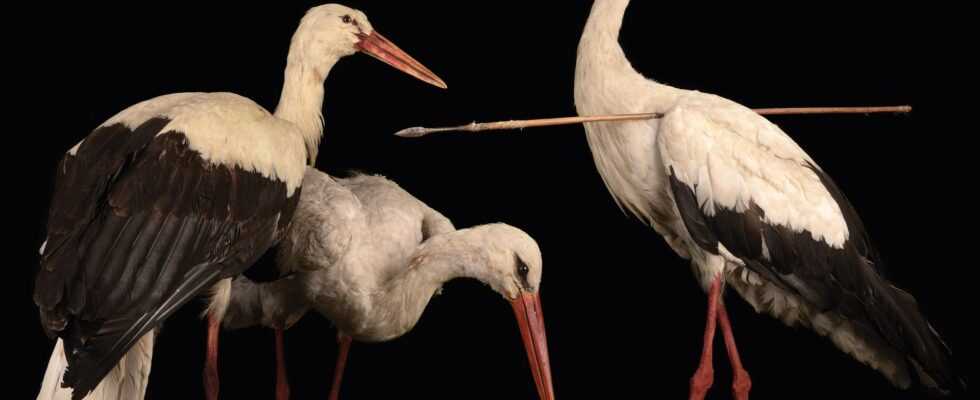Storks prefer moist grasslands and probably also spread in the wake of humans. Where our ancestors cleared forests to plant fields, they too gladly settled down and built their nests near human settlements or right on the roofs of their houses. Since the birds hunt snakes and frogs, the animals were always welcome to the residents of the houses. Due to their pronounced brood care, storks were also considered by the Greeks and Romans to be role models both for parental devotion during rearing and for the active gratitude of the young, of whom it was assumed that they would later take care of their elderly parents with the same self-sacrifice – for example by would piggyback these on the long journey south. For this piety towards their ancestors, the Roman author Aelian wrote around 200 AD in his work “De natura animalium” (On the Nature of Animals), citing an older work that has now been lost, that the storks were praised by the gods rewards that, having grown old themselves, they would move to oceanic islands to live out their twilight years as humans. Also in the Islamic culture, the stork was and is highly regarded as Haji Laklak, who makes a pilgrimage to Mecca every year.
unclear destination
Many of the myths and legends surrounding storks and their annual disappearance reveal, among other things, that mankind had basic knowledge of bird migration very early on. “The move was undisputed, but the destination was unclear,” says zoologist Kinzelbach. The Hohenstaufen Emperor Frederick II (1194–1250), who knew birds, also reported on this in his work »De arte venandi cum avibus« (The Art of Hunting with Birds) and named the phenomenon »transitus«. However, his contemporary, the German scholar Albertus Magnus (Albert von Lauingen, c. 1200–1280), was of the opinion that storks wintered in swamps or caves.
In the early modern period, however, there was little doubt about bird migration. A few naturalists already had an inkling of where the birds were going. The French doctor, botanist and traveler Pierre Bellon (1517–1564), for example, had personally observed migratory storks and pelicans in Egypt and the Levant and reported on them. Conrad Gessner (1516–1565), a Swiss physician and natural historian, was one of several authors of his time who found it worth capturing for posterity the story of the stork of Oberwesel, the master of the house on whose roof he spent every summer nested, one spring as a thank you to have laid a ginger root at your feet as a gift from afar – clearly a souvenir from foreign, overseas areas.
Despite the numerous indications, however, knowledge of bird migration did not become widespread either among scholars or in the general public. Or it was lost again, “particularly during the cultural upheaval in the Thirty Years’ War,” Kinzelbach suspects. New theories were developed, new answers were sought to the question of where the birds are going. The naturalist Charles Morton (1627–1698), author of the first English study on the subject, came up with a particularly original idea. He suspected that storks wintered on the moon, as did cranes and swallows. Morton estimated that it would take the birds a month to travel between the earth and their satellite. A fairly short journey, then, which, thanks to the lack of air resistance and gravity, they managed quite comfortably and mostly asleep. Linnaeus (1707–1778) wasn’t quite as far off the mark as the Englishman, but even the Swedish founder of systematic biology was convinced that swallows spend the winter in the mud at the bottom of lakes.
